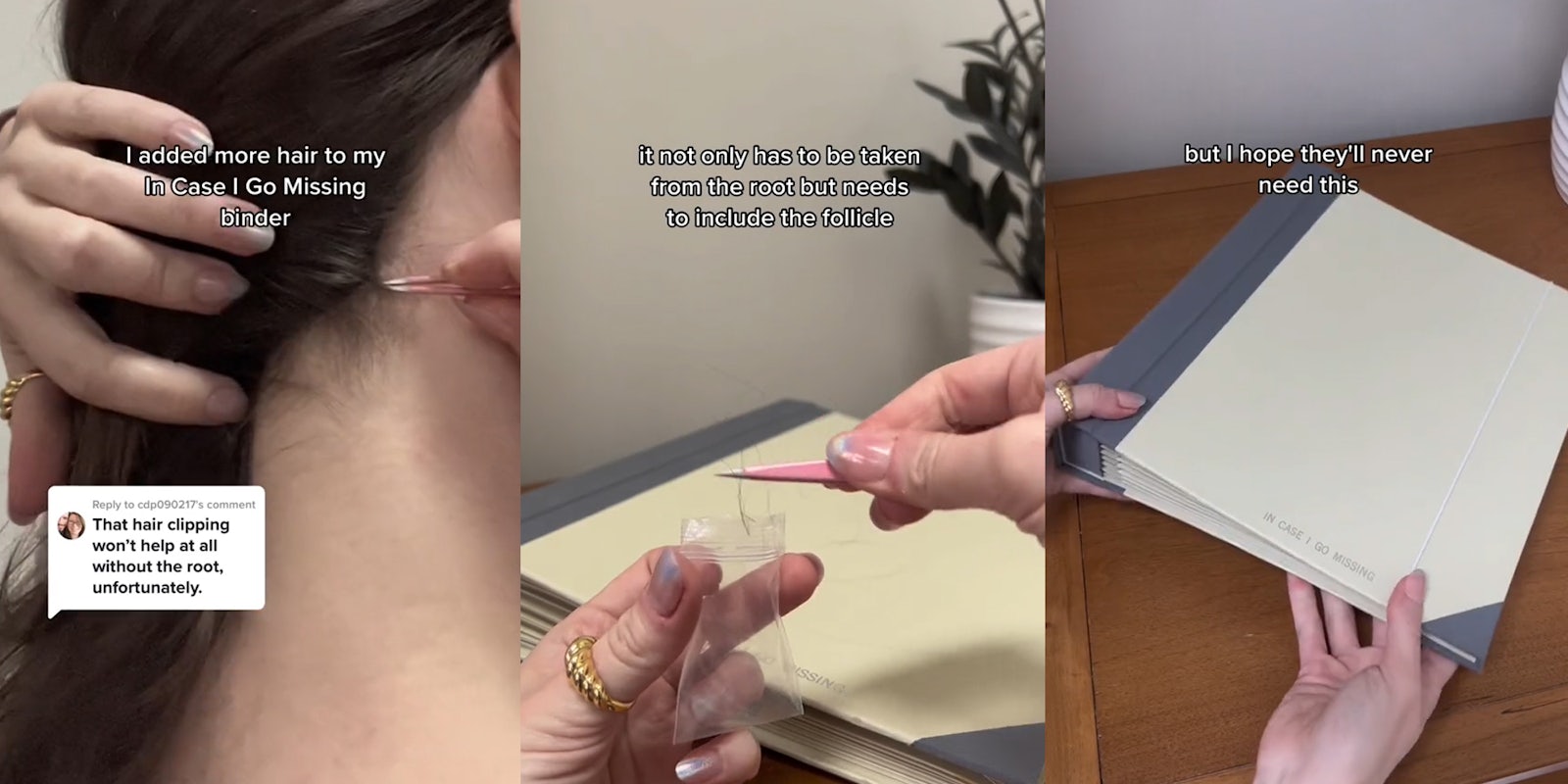TikTok’s obsession with true crime has spiraled into something beyond bad taste: Women are now stuffing hair and fingerprint samples into binders, and creating misinformation in the process.
Last month, around the same time Bryan Kohberger was named a suspect in the November murder of four University of Idaho students, a trend started circulating more widely on TikTok: Creating a DNA binder in case you go missing.
In December, the account @savor.it.all posted a TikTok that detailed what she put in a literal binder labeled “In case I go missing”: strands of hair, “clean fingerprints,” a handwriting sample, and, for some reason, her medical records, though those won’t really help if you’re actually missing.
In another video, she adds “passwords and alarm codes,” as well as her passport and “upcoming travel plans.”
“Identity theft speed run,” says one commenter.
The video has more than 10 million views, and a follow-up, in which she adds a hair sample that actually includes a follicle, has more than 6 million views, after it horrified Twitter. The podcast Crime Junkie, which is referenced in the original TikTok, does have a section on its website labeled “If I Go Missing,” which is likely where this trend started.
In response to a commenter who asked where she keeps this binder overflowing with personal information, she says “I leave it with someone I trust. Other folks use a safe.” This account also posted about the binder in early 2022, and is selling them. We reached out for comment via email.
This is, of course, a very bad idea that you should not try, but that kind of critical thinking is often lacking on TikTok, so people have tried.
But more people pointed out the misinfo. Creator @frogmommyyy, who says she’s getting a Master’s degree in forensic medicine, warned people not to do this for their mental health. In a follow-up, she explained that creating this binder doesn’t do anything, because investigators are going to be looking for DNA from the person who allegedly kidnapped you, not you. And they wouldn’t need already-plucked hair samples to potentially identify a body; they’d take what was on the body, and more likely would use dental records.
“However, if you were looking to commit a crime and be convicted of that crime, this binder is great for you,” she adds.
TikTok has long promoted other true crime-adjacent misinfo, like myths about human trafficking and kidnapping.
“It absolutely does tie in to the sensationalized, and often fake, videos circulating [on] both TikTok and Twitter about sex trafficking,” @frogmommyyy tells the Daily Dot. “It’s frustrating to see because it spreads misinformation and shifts focus away from groups that are much more high risk, like indigenous women and sex workers.” She adds that “it’s incredibly unethical to capitalize off of women’s very real fears.”
More recently, true crime fans on the app fixated on the surviving roommate of the four college students killed in Moscow, Idaho, an escalation of tactics and blurring of ethical lines. The death of Gabby Petito is another example of the app helping turn tragedy into entertainment.



